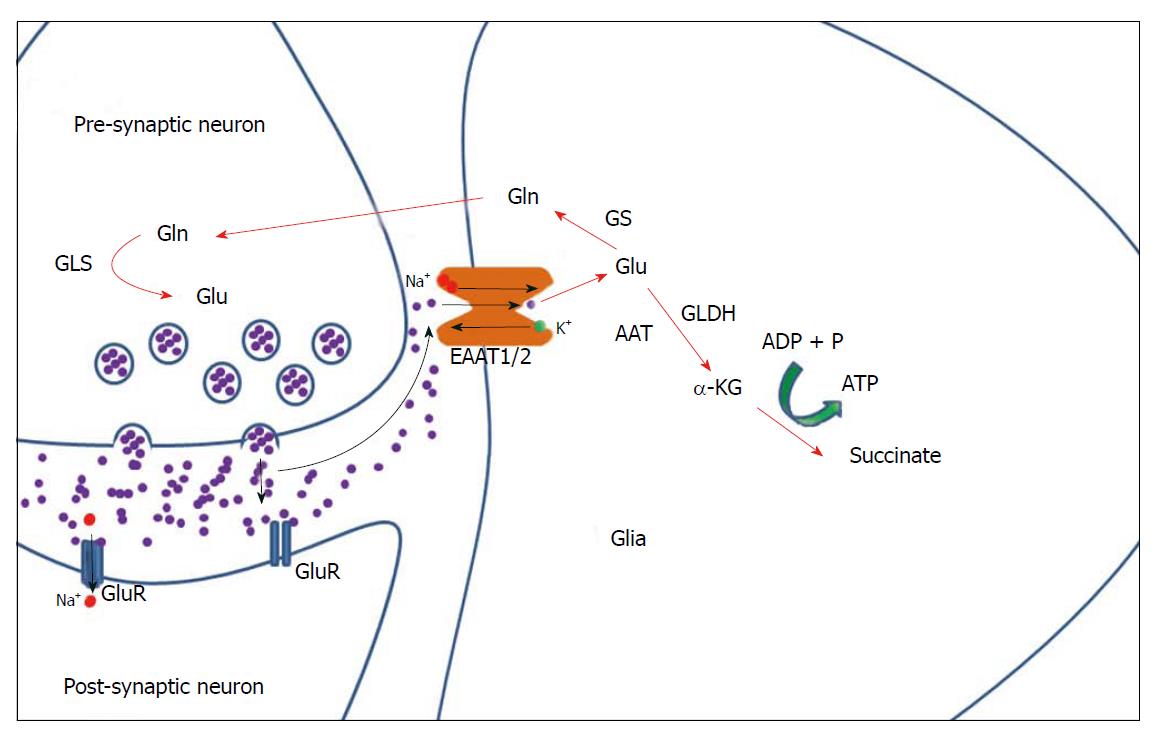Copyright
©The Author(s) 2018.
World J Psychiatr. Jun 28, 2018; 8(2): 51-63
Published online Jun 28, 2018. doi: 10.5498/wjp.v8.i2.51
Published online Jun 28, 2018. doi: 10.5498/wjp.v8.i2.51
Figure 1 The metabolic fate of glutamate in glia cells.
Glutamate is released from the pre-synaptic neuron to induce activation of the post-synaptic neuron via GluR. Spill-over of excess glutamate from the synaptic cleft is prevented through uptake by glial glutamate transporters EAAT1 and EAAT2, following which glutamate is converted to glutamine by GS for recycling back into glutamate, or α-KG for entrance into the tricarboxylic acid cycle. AAT: Aspartate Aminotransferase; α-KG: Alpha ketoglutarate; EAAT1/2: Excitatory amino acid transporter 1 and 2; GLDH: Glutamate dehydrogenase; Gln: Glutamine; GLS: Glutamate synthase; GS: Glutamine synthase; Glu: Glutamate; GluR: Glutamate receptors; Na+: Sodium; K+: Potassium.
- Citation: Parkin GM, Udawela M, Gibbons A, Dean B. Glutamate transporters, EAAT1 and EAAT2, are potentially important in the pathophysiology and treatment of schizophrenia and affective disorders. World J Psychiatr 2018; 8(2): 51-63
- URL: https://www.wjgnet.com/2220-3206/full/v8/i2/51.htm
- DOI: https://dx.doi.org/10.5498/wjp.v8.i2.51









